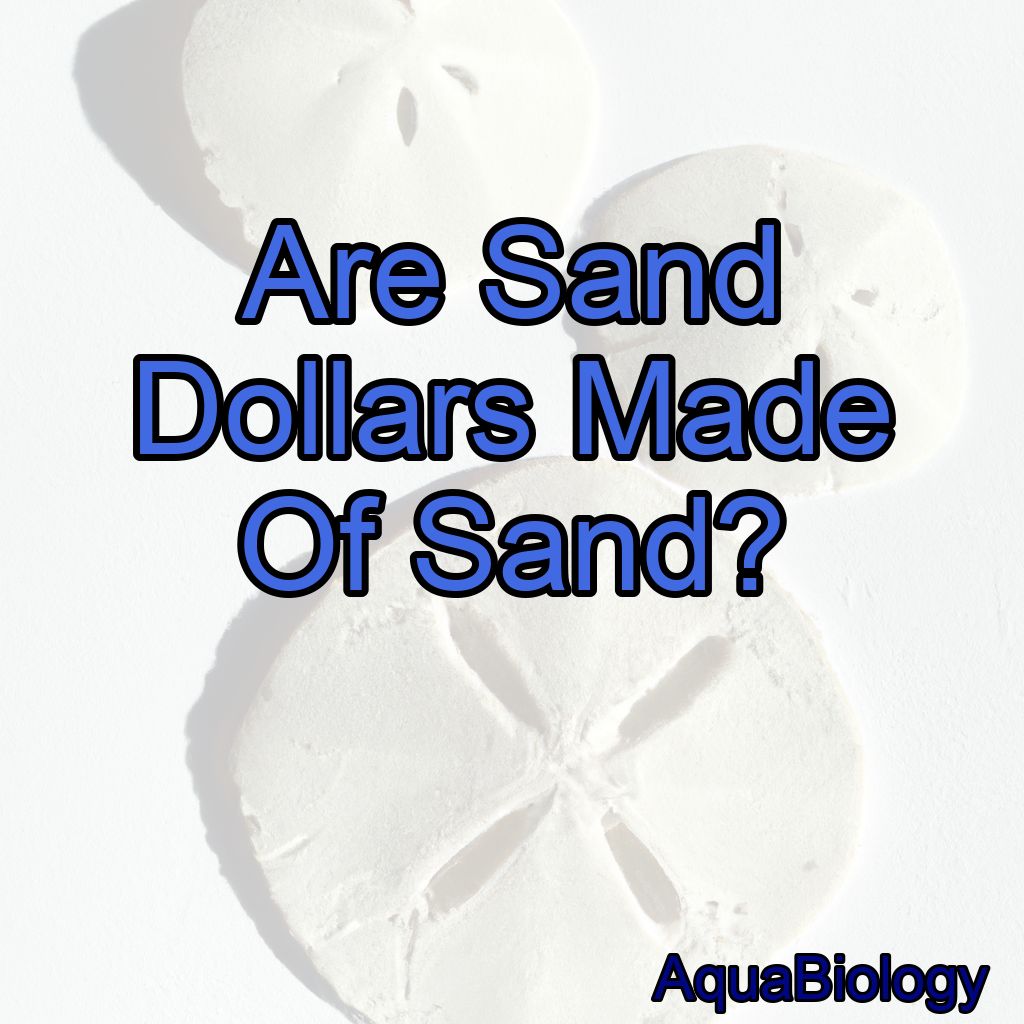As a marine biologist with a fascination for sand dollars, I often get asked the question, “are sand dollars made of sand?” The answer to this question is not as simple as it may seem.
No, sand dollars are not made of sand; they are marine animals with a rigid skeleton called a test.
In this blog post, I will explore the anatomy and biology of sand dollars to help us understand whether they are made of sand or not.
What are Sand Dollars?
Sand dollars are flat, disk-shaped echinoderms that belong to the same family as sea urchins and starfish.
They are found in the shallow waters of oceans around the world, and are known for their distinctive shape and intricate patterns.
Sand dollars are often found on sandy beaches, buried just below the surface of the sand.
Anatomy of Sand Dollars
Sand dollars have a hard exoskeleton, called a test, which is made up of calcium carbonate plates. The test protects the sand dollar’s delicate internal organs, including its mouth, digestive system, and reproductive organs.
Sand dollars have a unique five-fold symmetry, with five petal-like structures radiating from the center of their test.
Feeding Habits of Sand Dollars
Sand dollars are filter feeders, which means they use their spines and tube feet to capture plankton and other small particles of food from the water. They are able to bury themselves in the sand, leaving only their top surface exposed, to filter feed on passing water.
Do Sand Dollars Consist of Sand?

Although sand dollars are often found on sandy beaches, they are not made of sand. Their hard test is made up of calcium carbonate plates, which are secreted by the sand dollar’s skin and then fused together to form a rigid structure.
The plates are arranged in a unique pattern that is specific to each species of sand dollar.
Lifespan and Reproduction of Sand Dollars
Sand dollars can live for up to 10 years in the wild, and reach sexual maturity at around 2 years old. They reproduce sexually, with males and females releasing their eggs and sperm into the water.
The fertilized eggs hatch into tiny larvae, which eventually settle on the seafloor and grow into adult sand dollars.
Importance of Sand Dollars in Marine Ecosystems
Sand dollars play an important role in marine ecosystems, as they help to maintain the health of sandy seabeds. Their filter feeding habits help to remove excess nutrients and organic matter from the water, which can reduce the risk of harmful algal blooms and other water quality issues.
Conclusion
So, are sand dollars made of sand?
The answer is no.
Sand dollars are made up of calcium carbonate plates, which are secreted by the sand dollar’s skin and fused together to form a hard exoskeleton.
Here are 5 facts to summarize what we have learned:
1. Sand dollars are flat, disk-shaped echinoderms that belong to the same family as sea urchins and starfish.
2. Sand dollars have a hard exoskeleton, called a test, which is made up of calcium carbonate plates.
3. Sand dollars are filter feeders that use their spines and tube feet to capture plankton and other small particles of food from the water.
4. Sand dollars reproduce sexually, with males and females releasing their eggs and sperm into the water.
5. Sand dollars play an important role in marine ecosystems, helping to maintain the health of sandy seabeds.
FAQs
How can you tell how old a sand dollar is?
The age of a sand dollar can be estimated by counting the growth rings on the hard shell.
Do sand dollars have a test?
Yes, sand dollars have a test, which is their hard, flattened, round skeleton made up of calcium carbonate plates.
How much is a dead sand dollar worth?
A dead sand dollar has no commercial value.
It is illegal to collect live sand dollars in many areas, and it is important to leave them in their natural habitat to maintain the ecosystem.
How can you tell if a sand dollar is real?
A real sand dollar will have small, hair-like spines on its surface and a distinct five-pointed star pattern on the back.
It should also be relatively heavy and feel solid to the touch.
How long can sand dollars be out of water?
Sand dollars can survive out of water for a short period of time, typically no more than a few minutes to an hour.
However, it is important to handle them with care and return them to the water as soon as possible to ensure their survival.
How rare is it to find a live sand dollar?
It is relatively rare to find a live sand dollar, as they are usually found washed up on beaches already dead.




